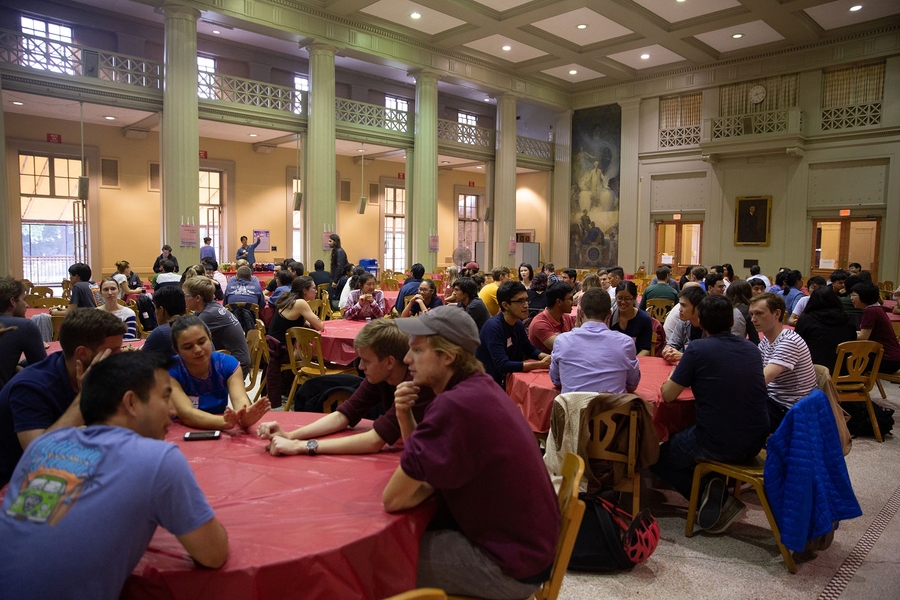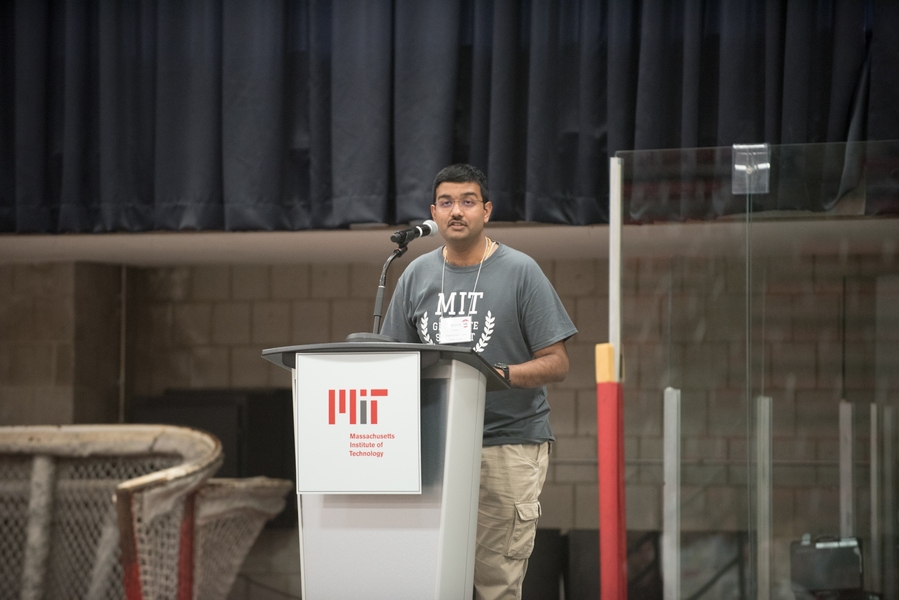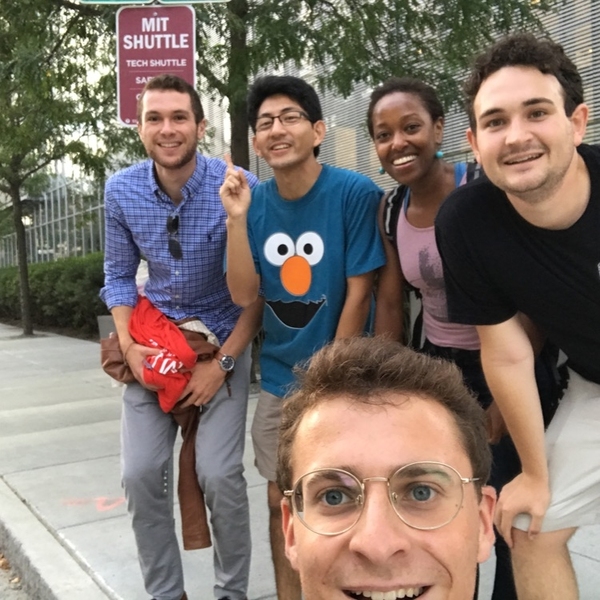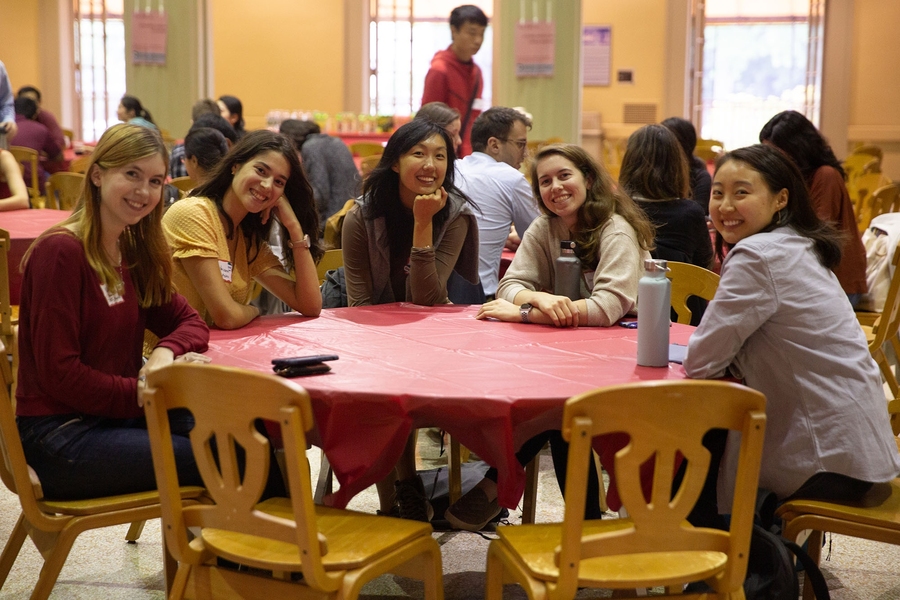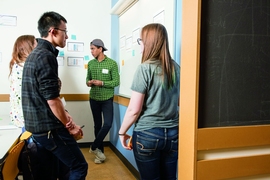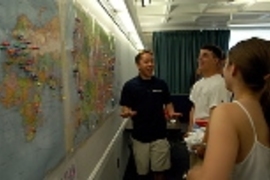In late August, MIT officially welcomed 2,056 new graduate students to campus to begin their intellectual journey. They hail from 46 states and 75 countries, some with partners or entire families in tow. Given the rich diversity of their perspectives and experiences, it’s no easy feat to introduce them to MIT — a place that can take time to get to know.
Using insights gleaned from a 2018 survey, the Graduate Student Council (GSC), with assistance from the Office of the Vice Chancellor, rethought orientation, in terms of timing, programming, and communications. Some modifications were simple — appointing an orientation chair earlier in the planning process, for example, and moving graduate events to nights and weekends, to reduce conflicts with department-specific orientation. Others involve significant shifts in the program, or new events altogether. The net effect has been a smoother, more welcoming program rolled out over several weeks.
Somesh Mohapatra, chair of the GSC Orientation Committee, was inspired to tweak graduate orientation shortly after he first set foot on campus in June 2018 (a bit earlier than many new students arrive). Since he had a chance to acclimate somewhat, he was inundated with questions from new students who arrived later in the summer. He recalls one in particular, from Vietnam, asking if her winter garb would be sufficient for the inevitable Boston cold.
“Motivated by that incident especially, I started a pilot series of webinars for the incoming students hosted by current students, which covered 66 countries in the first year itself,” he says. These webinars covered what to pack, how to travel, and importantly, were designed to be culturally-specific in describing the changes students would face.
Given the appetite for more information, the committee expanded pre-orientation outreach and programming through partnerships with the International Students Office (ISO) and the MIT Alumni Association (MITAA). The ISO added more webinars for international students, and the MITAA recruited regional alumni to host summer send-off events in the United States and abroad to welcome and connect incoming grads to MIT. The committee also worked with staff in the Division of Student Life and Office of the Vice Chancellor to improve incoming grad communications, revamp the GSC orientation website, and publish a new orientation brochure.
Once students arrive, helping them learn to navigate campus (literally) is critical. A new event piloted this year, the Campus-wide Scavenger Hunt, used a game-based, team-building format to introduce students to MIT’s important physical and virtual spaces. Teams competed to find objects, locations around campus, and solve riddles. “The hunt was really well received, and we will definitely expand on it for next year,” says Lauren McLean, a finance and events assistant who works closely with the GSC.
The committee also reconsidered the Graduate Student Welcome Lunch, the first event for all graduate students, partners, and families. “Last year we had the presidential welcome and the lunch as separate events. But at this point (in time), some students are still settling in, some just have arrived here, so we just want to have an official welcome in an informal setting for the students.” In that spirit, during the lunch MIT President L. Rafael Reif offered very brief, casual remarks, describing his own experience coming to MIT from Caracas, Venezuela. He concluded with sound, practical advice: “Wear several layers, and invest in a good coat!”
Orientation week offered a bevy of events to welcome students who identify with specific groups on campus, including international students, students of color, LGBTQ+ students, and graduate women. In addition, a new website was launched for grads with partners and families to familiarize them with the resources available to address their unique needs.
“All these changes are about making it easier for incoming students; it’s about making it less overwhelming,” Mohapatra explains. “MIT is already pretty tough place to be in. You know you’re going to be drinking from the firehose, so this is just making it a little easier.”
Given that there is so much to take in, the committee made a conscious decision to extend events into the fall, so that students can pace themselves. Grad 101, an orientation program previously offered for six hours over two days, was recast and expanded into an eight-week Resources 101 series, which runs from August through October. Each three-hour presentation provides students with a deeper dive into an important topic, including finances, advising and personal support, wellness, career and professional development, and entrepreneurship and innovation.
With help from MIT Institutional Research, the committee plans to survey students again this year to analyze how the changes were received and make adjustments to 2020 orientation. In addition, they’ll consult department administrators and heads of houses to understand how the modifications impacted department and dorm events.
In the meantime, the feedback Mohapatra has received in his conversations with students and staff has been quite positive. “I’m happy that the pulse for the orientation has been less overwhelming, more welcoming, and catering to all aspects of graduate student life, for both students and their families,” he says.
